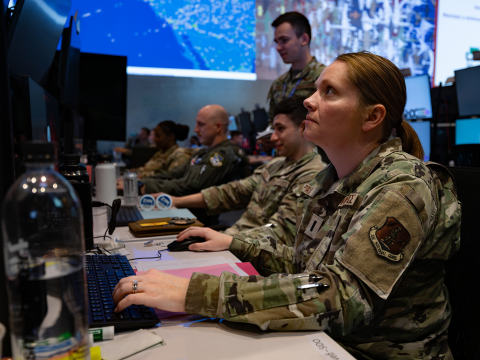It Is All About the Enterprise
The U.S. Army has become a fount of innovation. Under the leadership of Lt. Gen. Jeff Sorenson,
On March 2, 2009, Gen. George W. Casey Jr.,
Those watching the progress in implementation of the Army strategy know that tremendous advances already have been made. Network service centers (NSCs), the heart of the network, are being operationalized to support the U.S. Northern Command, Southern Command (SOUTHCOM), Pacific Command, European Command, Central Command (CENTCOM) and Africa Command areas of operations. Within these NSCs, fixed regional hub nodes (FRHNs), area processing centers (APCs), and theater network operations and security centers (TNOSCs) are being implemented and capability is being migrated into these centers. This constitutes a movement to everything over Internet protocol, or EoIP, the direction the Army needs to go to achieve the marginal capability, security and economies it seeks. This is huge progress and is setting the example for the rest of the force structure.
Key contracts are being awarded this fiscal year to implement this strategy. The enterprise e-mail contract is planned to be awarded by the fourth quarter, and the NSC/APC spiral one contract is to be awarded by the end of the third quarter. There will be plenty of small business opportunities in this implementation, particularly for service-disabled veteran-owned small businesses.
The Army’s LandWarNet Conference will be held this year in
Another important initiative is the Apps for the Army, or A4A, challenge that the Army has initiated. Just last year at the 2009 LandWarNet Conference, the Army vice chief of staff asked why the Army cannot have applications such as those found in the Apple App store. Well, the Army issued a challenge to all military and Army civilian personnel to develop and submit applications for Army use. The challenge was announced March 1, 2010, and submissions closed May 15, 2010. A total of 53 apps were submitted by 71 participants. Submissions included apps for Android, BlackBerry, ASP NET, LAMP, iPhone and Army Knowledge Online in a variety of app categories. Employee cash awards of up to $30,000 can be made. The submissions will be evaluated for functionality and security, and winners will be announced at this year’s LandWarNet Conference. This is just another reason to attend the conference and see what new functionality has been developed. It is amazing what can be achieved if people are turned loose to innovate.
Great things are going on in the Army. See them at LandWarNet.




Comments